Simone Fiorellino
Relative Representations of Latent Spaces enable Efficient Semantic Channel Equalization
Nov 29, 2024
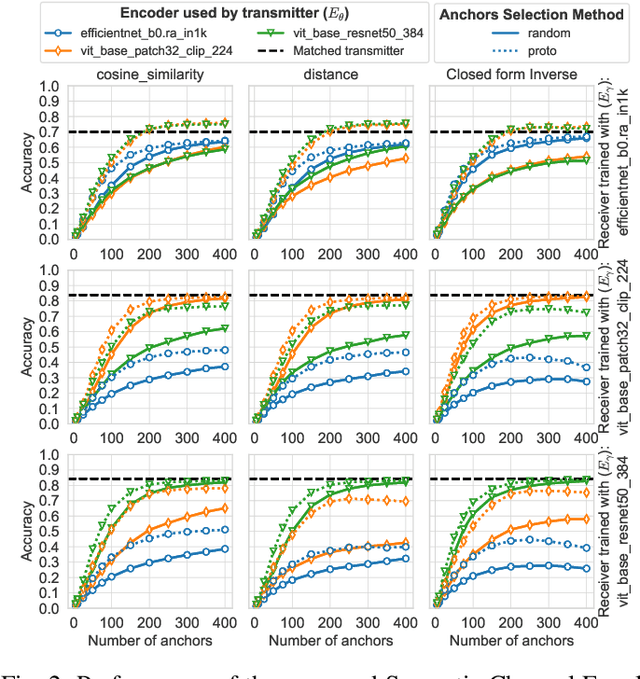
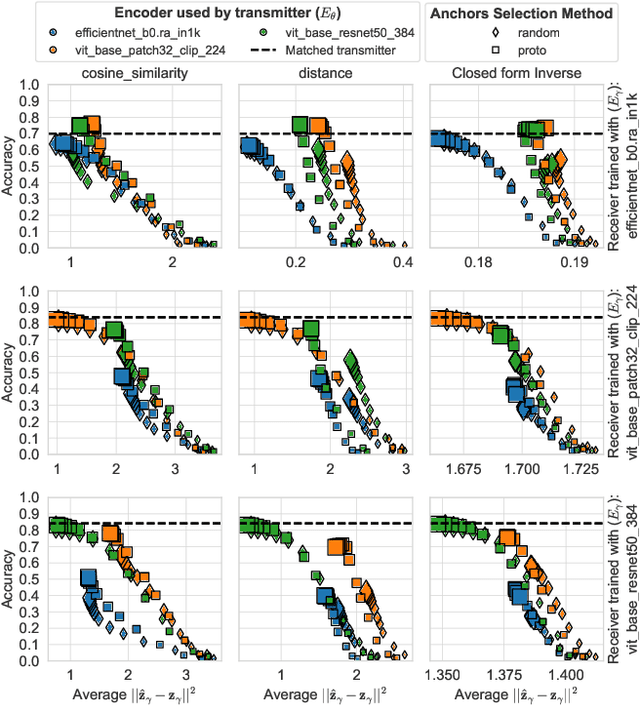
Abstract:In multi-user semantic communication, language mismatche poses a significant challenge when independently trained agents interact. We present a novel semantic equalization algorithm that enables communication between agents with different languages without additional retraining. Our algorithm is based on relative representations, a framework that enables different agents employing different neural network models to have unified representation. It proceeds by projecting the latent vectors of different models into a common space defined relative to a set of data samples called \textit{anchors}, whose number equals the dimension of the resulting space. A communication between different agents translates to a communication of semantic symbols sampled from this relative space. This approach, in addition to aligning the semantic representations of different agents, allows compressing the amount of information being exchanged, by appropriately selecting the number of anchors. Eventually, we introduce a novel anchor selection strategy, which advantageously determines prototypical anchors, capturing the most relevant information for the downstream task. Our numerical results show the effectiveness of the proposed approach allowing seamless communication between agents with radically different models, including differences in terms of neural network architecture and datasets used for initial training.
Dynamic Relative Representations for Goal-Oriented Semantic Communications
Mar 25, 2024



Abstract:In future 6G wireless networks, semantic and effectiveness aspects of communications will play a fundamental role, incorporating meaning and relevance into transmissions. However, obstacles arise when devices employ diverse languages, logic, or internal representations, leading to semantic mismatches that might jeopardize understanding. In latent space communication, this challenge manifests as misalignment within high-dimensional representations where deep neural networks encode data. This paper presents a novel framework for goal-oriented semantic communication, leveraging relative representations to mitigate semantic mismatches via latent space alignment. We propose a dynamic optimization strategy that adapts relative representations, communication parameters, and computation resources for energy-efficient, low-latency, goal-oriented semantic communications. Numerical results demonstrate our methodology's effectiveness in mitigating mismatches among devices, while optimizing energy consumption, delay, and effectiveness.
TopoX: A Suite of Python Packages for Machine Learning on Topological Domains
Feb 07, 2024
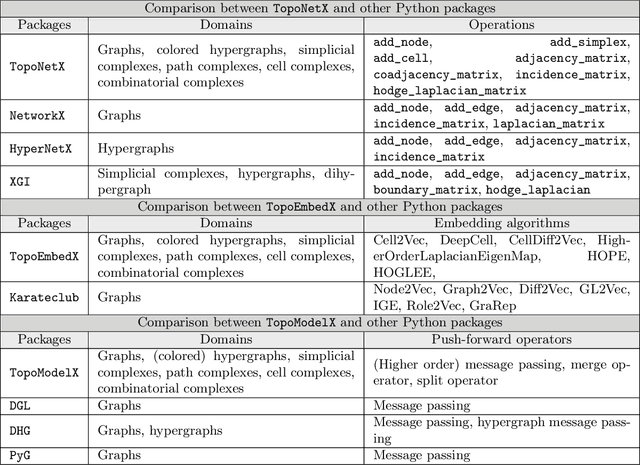
Abstract:We introduce topox, a Python software suite that provides reliable and user-friendly building blocks for computing and machine learning on topological domains that extend graphs: hypergraphs, simplicial, cellular, path and combinatorial complexes. topox consists of three packages: toponetx facilitates constructing and computing on these domains, including working with nodes, edges and higher-order cells; topoembedx provides methods to embed topological domains into vector spaces, akin to popular graph-based embedding algorithms such as node2vec; topomodelx is built on top of PyTorch and offers a comprehensive toolbox of higher-order message passing functions for neural networks on topological domains. The extensively documented and unit-tested source code of topox is available under MIT license at https://github.com/pyt-team.
ICML 2023 Topological Deep Learning Challenge : Design and Results
Oct 02, 2023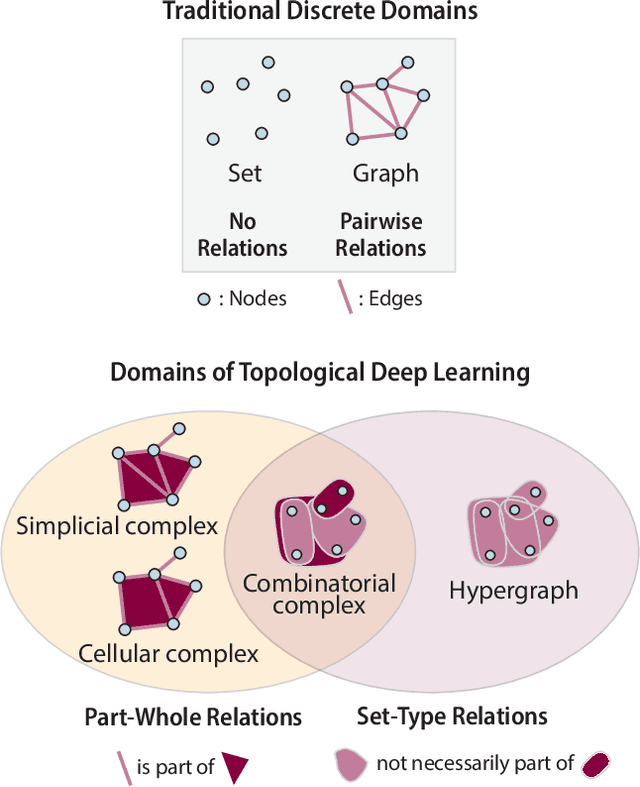
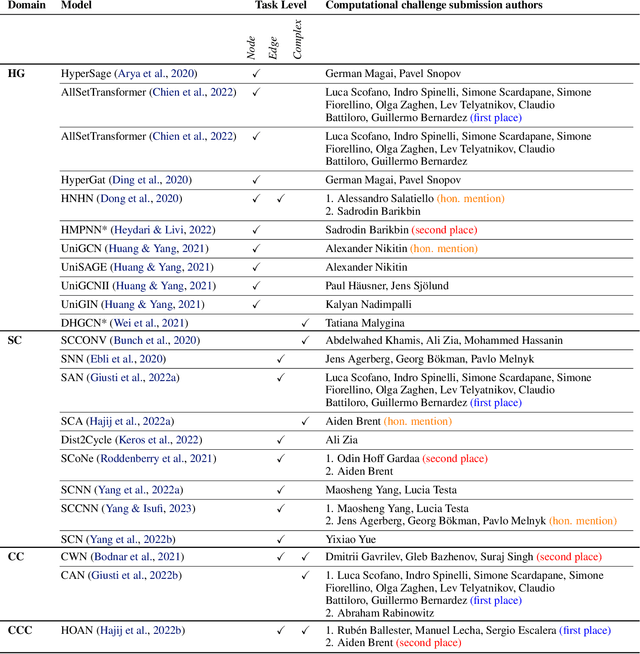
Abstract:This paper presents the computational challenge on topological deep learning that was hosted within the ICML 2023 Workshop on Topology and Geometry in Machine Learning. The competition asked participants to provide open-source implementations of topological neural networks from the literature by contributing to the python packages TopoNetX (data processing) and TopoModelX (deep learning). The challenge attracted twenty-eight qualifying submissions in its two-month duration. This paper describes the design of the challenge and summarizes its main findings.
 Add to Chrome
Add to Chrome Add to Firefox
Add to Firefox Add to Edge
Add to Edge